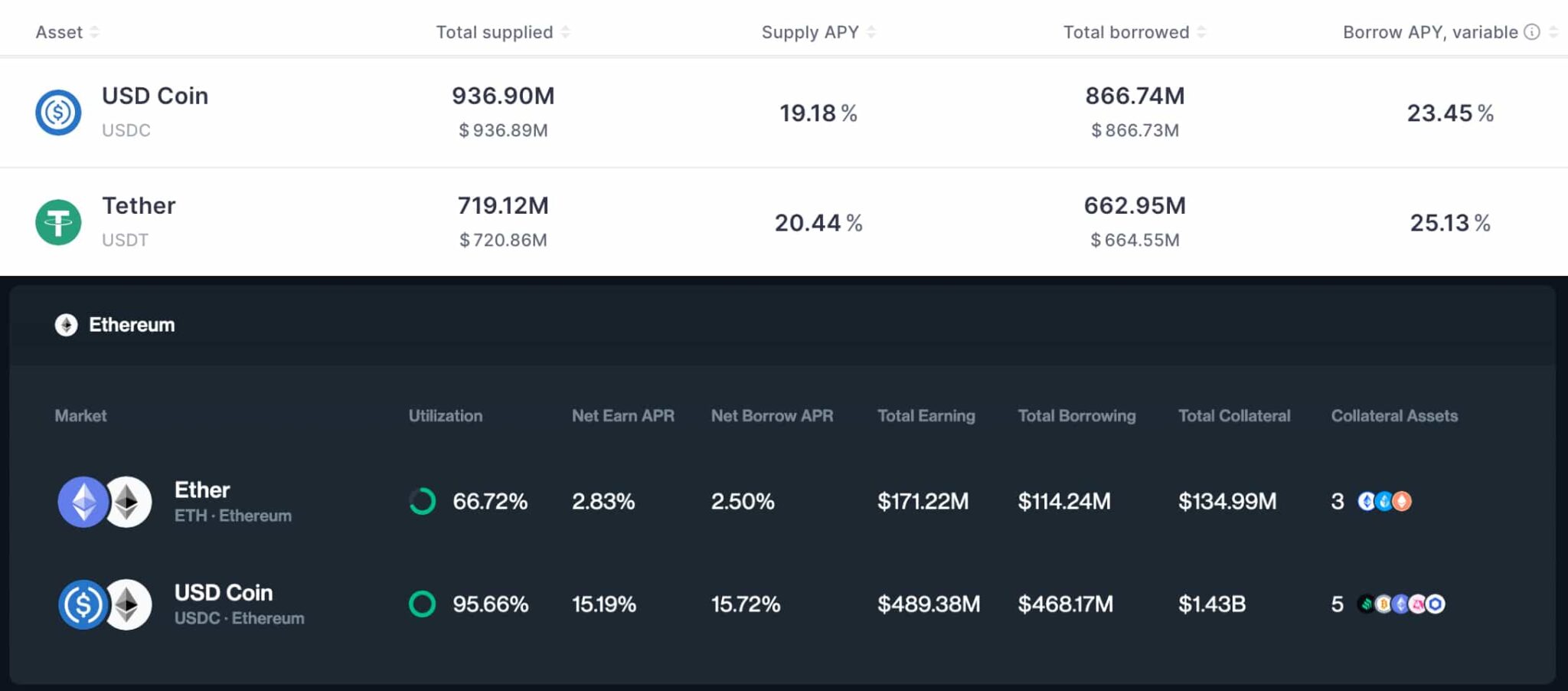DeFi
www.coindesk.com
26 April 2023 19:20, UTC
Reading time: ~3 m
Centralized exchanges (CeFi) have helped early adoption of crypto by the masses, but have suffered from many recent failures. In the long term, decentralized exchanges (DeFi) will strengthen the backbone of future financial systems, panelists said on stage at “DeFi vs. CeFi: A Distinction With a Difference” at CoinDesk’s Consensus 2023 conference in Austin.
Read full coverage of Consensus 2023 here.
The main hurdle of mass adoption of crypto has been the complexity of the technology for average users, which is why centralized exchanges, such as Coinbase (COIN) has been able act as an early on-ramp into crypto for many people jumping from the traditional fiat economy into digital assets.
“If my grandparents wanted to buy bitcoin, are they going to download Metamask, figure out how to hold their own keys and all that? Probably not,” said Nathan Cha, marketing lead at crypto derivative exchange dYdX during the panel.
Read more: DeFi vs. CeFi in Crypto
However, the lack of transparency in a CeFi exchange is what eventually led to failures such as the spectacular collapse of FTX last fall. When a customer uses a centralized exchange, money goes into a wallet but everything behind that is controlled by an entity that isn’t transparent and is not using blockchain infrastructure, said Sidney Powell, CEO of crypto lender Maple Finance, using BlockFi and Celsius as an example.
“Effectively, it was a private ledger,” Powell said. However, that’s not the case for DeFi as there is more transparency in how the money is being stored and moved. “If you contrast that with, like, DeFi lending, whether it’s Aave, Compound or Maple, you can see the movement of funds at all times and it’s always controlled using Solidity and using smart contracts,” he added.
“The core difference [between CeFi and DeFi] is … self custody but more than that, from a technology perspective, it’s the use of smart contracts and a blockchain to actually operate the business,” Powell said.
However, that doesn’t mean that there will be a mass adoption of DeFi ecosystem anytime soon as CeFi will still likely be the main avenue, in the short-term, for traditional finance customers and older users to adopt the digital assets.
Read more: Will DeFi Emerge From Crypto Winter Stronger?
Also the regulatory environment that the current financial market has integrates well with the CeFi model, said panelist Salman Banaei, head of policy at Uniswap Labs. “CeFi has an advantage in the sense that their business model, with clear control persons, is reflected in kind of the regulatory infrastructure that we currently have,” he said, noting that this makes it an easier transition for CeFi to fit into securities or commodities or banking laws.
DeFi, on the other hand, has a disadvantage on that front, as it relies on open-source protocol which reduces “control surface area” from a regulations perspective, Banaei added.
However, in the longer term, this will change, he said. Over time, the role of CeFi won’t change drastically from what it is right now, whereas DeFi will eventually become the main infrastructure for the future of the financial system, Banaei said.
Down the line, “DeFi kind of becomes the backbone for a new economy, while CeFi kind of plays – continues to play – that kind of on-ramp role into this much richer DeFi-based environment,” Banaei added.
Read more: FTX Showed the Problems of Centralized Finance, and Proved the Need for DeFi
Sourced from cryptonews.net.










